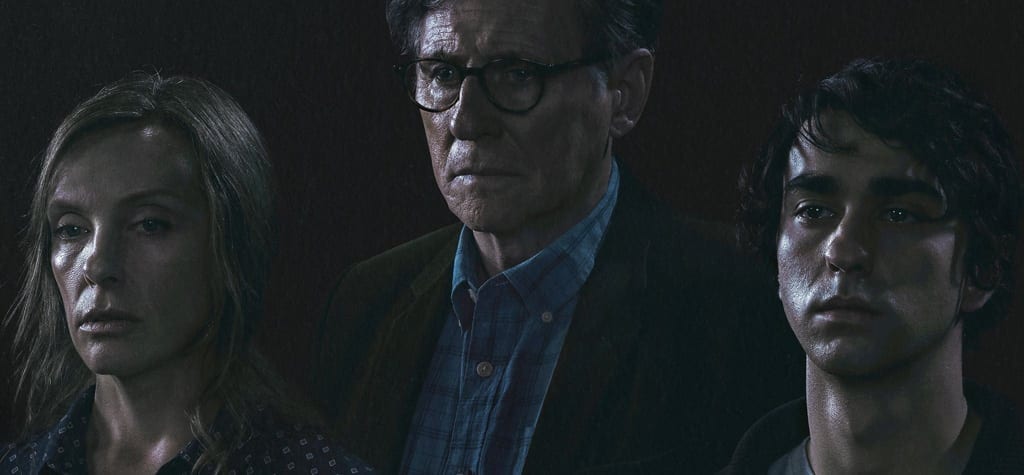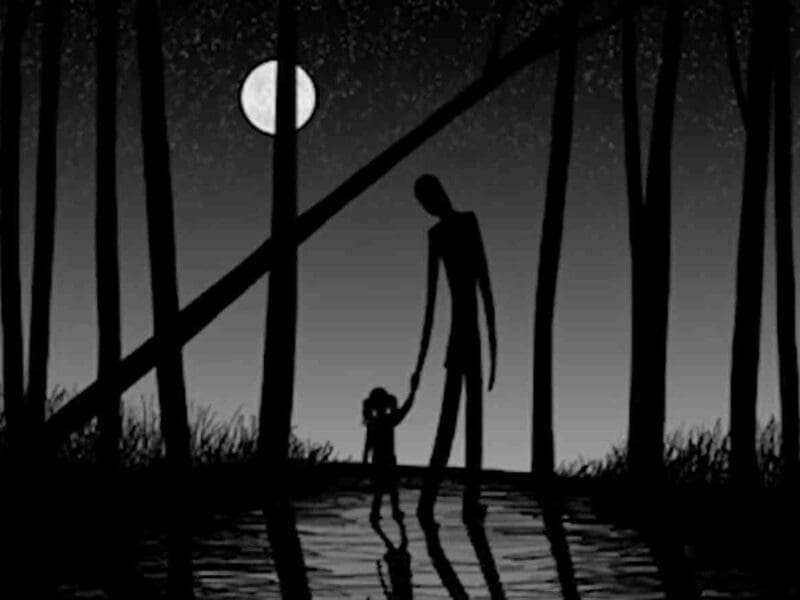
The wild rumpus psychology of the movie ‘Hereditary’
Warning! Major spoilers for Hereditary ahead!
With its grief-stricken terror and insidious, haunted household, Ari Aster’s Hereditary is the latest in a number of domestic horror movies that have hit theaters in recent years. The film has been compared to a number of classic horrors including Rosemary’s Baby and The Exorcist and more modern fare like Robert Eggers’s The Witch.
However, with its focus on the manners with which children deal with grief, anger, and mourning and a strange, shocking finale in which Peter (Alex Wolff) is crowned king of the underworld, the film unexpectedly bears odd similarities to another story – Maurice Sendak’s Where the Wild Things Are.
Told in just ten sentences, Sendak’s classic 1963 story follows Max – a young and unruly boy punished by his mom and sent to his room without dinner. Full of a clear rage, Max escapes into his imagination and takes a private boat where the wild things are and eventually becomes their ruler – the “most wild thing of all”.

Literary influences
In a 2002 interview with children’s book historian Leonard Marcus, Sendak mused that his work has “only one subject . . . how do children survive?” You could argue Aster is asking the same question with Hereditary, from Annie’s (Toni Collette) survival of a household full of perpetual mourning to Peter and Charlie (Milly Shapiro) surviving the same obstacles as the youngest heirs of this sinister satanic lineage.
After the death of her grandma, a deeply concerned Charlie even asks her mom: “Who’s going to take care of me?” She has reason to be concerned – there’s a conspiracy against her survival, after all. Charlie escapes into a world of her own imagination, making weird and grotesque creations and sketching people in malformed manners, possibly as a way to deal with her own grief and fear and the encroaching evil within her.
In the scene in which she’s in bed talking to her mom, she’s even wearing a white fleece pajama eerily similar to the one Max wears in Where the Wild Things Are. At the start of the film, she’s our Max – escaping into a world of her imagination to escape the horrors of her reality.

Accountability
It’s following her tragic death and her brother’s accountability for it that Peter becomes the new Max of the movie. From this point on, Hereditary becomes progressively more dreamlike and nightmarish, leading to the savage finale in which Peter is crowned King Paimon. The scene offers eerie echoes of Sendak’s Wild Rumpus sequence from Where the Wild Things Are where Max is crowned the new King of the island.
The “wild things” in Hereditary might be naked elderly folk with sinister grins and not adorable monsters voiced by James Gandolfini (The Sopranos) – as they are in the Spike Jonze adaptation of the story – but the scene regardless offers remarkable similarities to Jonze’s 2009 cinematic retelling of the story.
Obviously, this could all be some massive coincidence rather than a conscious decision made by Aster within the story. However, it’s interesting to note just how similar some of the psychological depths of Sendak’s story and that of Hereditary are.

Manifested rage
For instance, an article by The Psychologist argued that Sendak’s work tends to focus “on child rage and emotional unavailability of a mother. That rage then manifests in an altered state of consciousness, like a dream or fantasy.” In Hereditary, we see how this rage manifests in Annie, who talks about almost killing her children while sleepwalking, and who harbors a conspicuous amount of rage towards her emotionally unavailable mother.
But the final nightmarish scenes of the movie also slip the film into an “altered state of consciousness,” one where events defy logic and science and the rules of the film’s own reality become willfully fractured.
If you want to get all tin foil hat about those scenes, you could even argue that the thing Peter has inherited from his genetics isn’t Satanic power, but is in fact sleepwalking, and that the third act of the movie is all a harrowing waking dream – one with potentially fatal results – and that his sleepwalking is a symptom of his mourning for his sister and his rage towards his mom.

Fantasy & reality
By slipping into a fantasy world as a reaction to his reality, Peter finds superiority, is given the space to be free, and can punish his parents as unjustly as he feels he’s been punished.
After all, like Max in Where the Wild Things Are, Peter wanted to play freely (by attending a party without his sister tagging along), felt inferior (his sister was Grandma’s “favorite” and is given much more attention than him), and is ultimately punished by his mom (for the death of his sister which happened beyond his control).
However, in becoming King Paimon, Peter gains control, freedom, power, and superiority. The crown is placed on his head and the wild rumpus can begin.







